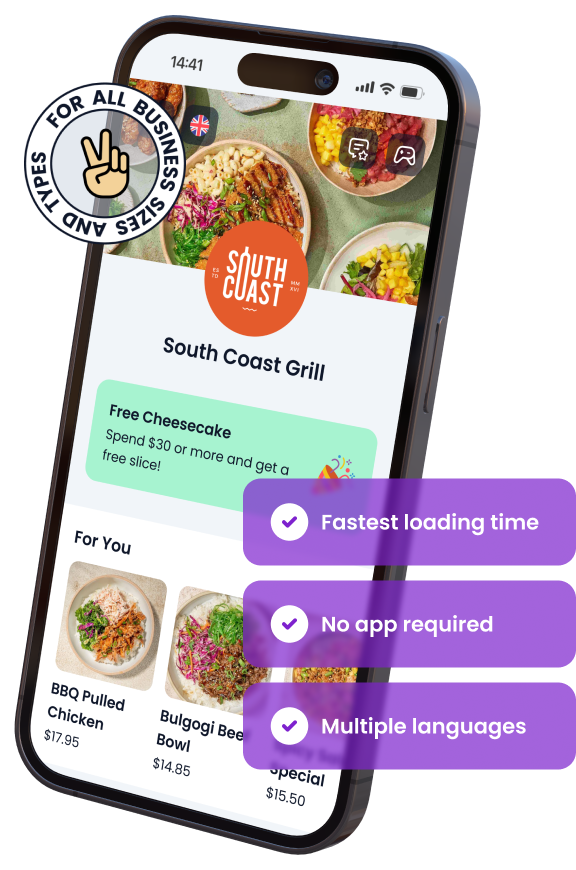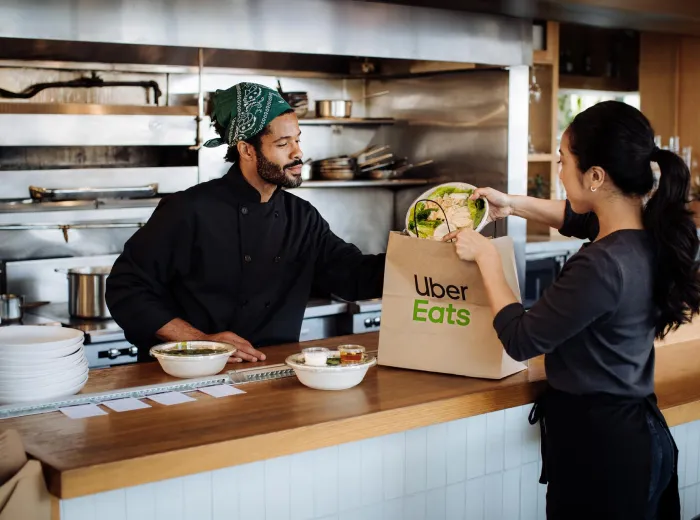

15 Steps to Take Before Opening a Restaurant in Abu Dhabi
Opening a restaurant in Abu Dhabi is an exciting yet challenging endeavor. The city’s vibrant culinary scene, fueled by its diverse population and thriving tourism industry, presents numerous opportunities for success. However, the path to opening a restaurant here is paved with unique regulatory requirements, cultural considerations, and competitive pressures. To navigate these complexities and position your restaurant for success, it’s essential to take a strategic, well-informed approach from the outset.
In this guide, we’ll walk you through the 15 critical steps you need to take before opening a restaurant in Abu Dhabi. Whether you’re a seasoned restaurateur or a first-time entrepreneur, following these steps will help you build a strong foundation for your venture, ensuring you’re prepared to meet the challenges and seize the opportunities that come your way.
Would you like to listen our deep-dive conversation about this article?
Step 1. Understand the Abu Dhabi Restaurant Market
Understanding the Abu Dhabi restaurant market is crucial for making informed decisions and positioning your business for success. This first step involves a deep dive into market demand, customer preferences, and the competitive landscape.
What is the Market Demand?
To gauge the potential success of your restaurant, you need to understand the market demand. Abu Dhabi’s dining scene is influenced by a mix of local residents, expatriates, and tourists, each with distinct culinary preferences.
- Analyze market trends: Identify which cuisines and dining concepts are currently popular in Abu Dhabi. Are fast-casual restaurants on the rise, or is there a growing demand for fine dining experiences? Understanding these trends will help you align your concept with what diners are seeking.
- Identify customer needs: Research the dining habits of the local population. For example, there is a strong demand for family-friendly dining options, as well as interest in healthy and organic food. Catering to these preferences can give your restaurant a competitive edge.
How to Identify Your Target Audience
Defining your target audience is a key component of your market analysis. Abu Dhabi is a culturally diverse city, which means you need to be specific about who your primary customers will be.
- Demographic analysis: Segment the market based on factors such as age, income level, nationality, and lifestyle. For instance, are you targeting young professionals looking for trendy eateries, or families seeking casual dining options?
- Cultural considerations: Take into account the cultural and religious practices that might influence dining choices. For example, the majority of the population follows Islamic dietary laws, so offering halal food options is essential.
- Dietary preferences: With increasing awareness of health and wellness, many consumers are seeking vegan, vegetarian, and gluten-free options. Including these in your menu could broaden your appeal.
Key Takeaways:
- Align your restaurant concept with market trends and customer needs.
- Define your target audience based on detailed demographic and cultural analysis.
- Incorporate dietary preferences into your menu to cater to a broader customer base.
By thoroughly understanding the Abu Dhabi restaurant market, you’ll be better equipped to create a restaurant that resonates with your target audience and stands out in the competitive landscape.
Step 2. Conduct Comprehensive Competitor Analysis
Conducting a comprehensive competitor analysis is essential to positioning your restaurant effectively in Abu Dhabi’s competitive market. By understanding who your competitors are and what they offer, you can identify opportunities to differentiate your restaurant and attract your target audience.
Who are Your Competitors?
Identifying your competitors is the first step in understanding the competitive landscape. This includes both direct competitors (restaurants offering similar cuisine or dining experiences) and indirect competitors (other dining establishments that may appeal to the same customer base).
- Direct competitors: Look for restaurants in Abu Dhabi that offer the same type of cuisine or service level you plan to provide. For example, if you’re opening an Italian restaurant, identify other Italian eateries in the area, focusing on those with a similar price range and target demographic.
- Indirect competitors: Consider other restaurants that might attract your target audience, even if they offer different cuisines or dining experiences. For instance, a family-friendly restaurant might compete with casual dining venues that cater to the same group.
- Online competitors: Don’t forget to consider the impact of food delivery services and cloud kitchens. These businesses might not have a physical presence but could still compete with your restaurant for customers.
How to Differentiate Your Restaurant
Once you have identified your competitors, the next step is to analyze their strengths and weaknesses. This analysis will help you determine how to position your restaurant in a way that offers something unique to customers.
- Analyze competitor strengths: What do your competitors do well? Is it their menu, location, customer service, or ambiance? Understanding their strengths can help you identify best practices that you might want to adopt or adapt.
- Identify competitor weaknesses: Look for areas where your competitors may be lacking. This could be in the variety of menu offerings, service speed, or customer engagement. These weaknesses present opportunities for you to differentiate your restaurant.
- Develop your Unique Value Proposition (UVP): Based on your analysis, craft a UVP that sets your restaurant apart. This could be a signature dish, a unique dining experience, exceptional service, or an innovative concept that fills a gap in the market.
Key Takeaways:
- Identify both direct and indirect competitors to understand the full competitive landscape.
- Analyze competitor strengths to learn from their successes and avoid potential pitfalls.
- Develop a Unique Value Proposition that clearly differentiates your restaurant from others.
By conducting a thorough competitor analysis, you can strategically position your restaurant to stand out in the crowded Abu Dhabi market, offering something unique that attracts and retains customers.
Step 3. Craft a Solid Business Plan
Crafting a solid business plan is the foundation of any successful restaurant venture. Your business plan will serve as a roadmap, guiding your decisions and helping you secure financing. It should clearly outline your restaurant’s vision, financial projections, and operational strategies.
What Should Your Business Plan Include?
A comprehensive business plan covers several critical areas that will guide the development and operation of your restaurant.
- Vision and Mission Statements: Start with a clear vision and mission for your restaurant. Your vision statement should encapsulate the long-term goal of your restaurant, while your mission statement should define the purpose of your business and the value you intend to provide to your customers.
- Business Model and Revenue Streams: Outline your business model, including your target market, pricing strategy, and sales channels. Identify all potential revenue streams, such as dine-in, takeout, delivery, catering, and special events.
- Market Analysis: Summarize your findings from the market research and competitor analysis sections. Highlight the key trends, target audience, and competitive landscape that will influence your restaurant’s strategy.
- Marketing and Sales Strategy: Detail your approach to attracting and retaining customers. This includes branding, advertising, social media presence, promotions, and loyalty programs. Define your unique selling points and how you plan to communicate them to your audience.
Financial Projections and Budgeting
Your business plan must include detailed financial projections to demonstrate the viability of your restaurant. These projections are crucial for securing investment and managing your finances effectively.
- Startup Costs: List all the initial expenses required to open your restaurant. This includes costs for equipment, interior design, permits, licenses, and initial inventory. Be sure to include a contingency fund for unexpected expenses.
- Revenue Forecasts: Project your expected revenue based on your market analysis and pricing strategy. Break down these forecasts by month and year, considering different revenue streams and peak periods.
- Expense Forecasts: Detail your ongoing operational expenses, such as rent, utilities, labor, food costs, marketing, and maintenance. Categorize these expenses into fixed and variable costs to better understand your financial commitments.
- Breakeven Analysis: Calculate the breakeven point—when your restaurant’s revenue will cover all operating costs. This is a crucial metric for understanding how long it will take to become profitable and how much sales volume you need to achieve it.
- Funding Requirements: Outline how much capital you need to raise and how you plan to use it. Specify whether you will seek loans, investors, or self-fund the venture. Include details on the terms and conditions of any financing you anticipate.
Key Takeaways:
- Include a clear vision, mission, and business model in your plan to guide your restaurant’s direction.
- Provide detailed financial projections, including startup costs, revenue forecasts, and a breakeven analysis, to ensure financial viability.
- Use your business plan as a tool to secure funding and to navigate the challenges of opening and running your restaurant.
A well-crafted business plan not only sets the stage for your restaurant’s success but also helps you anticipate challenges and make informed decisions as you move forward.
Step 4. Secure the Necessary Permits and Licenses
Securing the necessary permits and licenses is a critical step in opening your restaurant in Abu Dhabi. The local government requires specific documentation to ensure that your business complies with health, safety, and operational regulations.
What Permits Are Required?
To operate legally, you’ll need to obtain several key permits and licenses:
- Trade License: This is the primary business license required to operate a restaurant in Abu Dhabi. It is issued by the Department of Economic Development (DED).
- Food Establishment Permit: Issued by the Abu Dhabi Food Control Authority (ADFCA), this permit ensures that your restaurant meets the necessary food safety standards.
- Health and Safety Certificates: You’ll need to secure certificates related to fire safety, hygiene, and employee health, ensuring compliance with local regulations.
How to Apply for Licenses in Abu Dhabi
Navigating the application process can be complex, so it’s important to follow these steps:
Step-by-step application process:
- Submit your business plan and required documents to the DED for initial approval.
- Apply for the Food Establishment Permit through the ADFCA, ensuring that your kitchen layout and food storage plans meet health standards.
- Obtain necessary inspections for health and safety certificates from relevant authorities.
Tips for ensuring compliance:
- Work closely with local consultants who are familiar with Abu Dhabi’s regulatory environment.
- Ensure all documents are complete and accurate to avoid delays in the approval process.
Key Takeaways:
- Obtain all required permits and licenses to ensure your restaurant operates legally and safely.
- Follow the application process carefully to avoid delays and ensure compliance with Abu Dhabi regulations.
By securing the necessary permits and licenses, you can avoid legal pitfalls and ensure that your restaurant is fully compliant with local regulations, allowing you to focus on delivering a great dining experience.
Step 5. Choose the Perfect Location
Choosing the perfect location for your restaurant is one of the most important decisions you’ll make. The right location can significantly impact your restaurant’s visibility, foot traffic, and overall success. In Abu Dhabi, factors such as accessibility, surrounding businesses, and neighborhood demographics play a crucial role in selecting the ideal spot.
How to Evaluate Potential Locations
When evaluating potential locations for your restaurant, consider the following factors:
- Foot Traffic: High foot traffic areas, such as malls, busy streets, or tourist hotspots, can provide a steady stream of potential customers. Observe the flow of people at different times of the day to gauge the consistency of foot traffic.
- Visibility and Accessibility: A location that is easily visible from the street and accessible by both pedestrians and vehicles is ideal. Ensure there is ample parking or convenient access to public transportation to attract a wider range of customers.
- Proximity to Competitors: Being close to competitors can be a double-edged sword. While it might mean you’re in a popular dining area, it also means you’ll need to stand out to attract customers. Consider whether the competition nearby will help or hinder your business.
What Makes a Location Profitable?
To ensure your chosen location will be profitable, consider these key elements:
- Demographics: Choose a location where the local population matches your target audience. For example, a high-end restaurant would thrive in an affluent neighborhood, while a casual eatery might do better in a busy commercial area.
- Nearby Attractions: Locations near popular attractions, such as cultural landmarks, shopping centers, or entertainment venues, can draw more customers. These areas often experience higher foot traffic, especially during weekends and holidays.
- Impact of Surrounding Businesses: The presence of complementary businesses, such as coffee shops, retail stores, or offices, can drive additional traffic to your restaurant. Being part of a bustling business district can boost lunchtime and after-work crowds.
Key Takeaways:
- Evaluate locations based on foot traffic, visibility, and accessibility to maximize customer flow.
- Consider the demographics and surrounding attractions to ensure the location aligns with your target market.
- Leverage the presence of nearby businesses to enhance your restaurant’s visibility and profitability.
By carefully selecting a location that meets these criteria, you’ll set your restaurant up for long-term success in Abu Dhabi’s competitive dining landscape.
Step 6. Design Your Restaurant Layout and Interior
The design of your restaurant’s layout and interior plays a pivotal role in shaping the dining experience and operational efficiency. A well-thought-out design can enhance customer satisfaction, optimize workflow, and reflect your brand’s identity.
How to Create an Efficient Layout
An efficient layout is essential for smooth operations and a pleasant dining experience. Here’s how to design a layout that works:
- Optimize Space Utilization: Make the most of your available space by balancing the kitchen, dining area, and other essential zones. Ensure that the kitchen is large enough for food preparation and storage without compromising the dining area.
- Ensure a Smooth Flow: Plan for easy movement between the kitchen, dining area, and service stations. This reduces wait times and minimizes congestion, improving both customer service and staff efficiency.
- Consider Seating Arrangements: Choose seating layouts that maximize capacity while ensuring comfort and privacy. For example, a mix of booth seating, tables, and bar stools can cater to different group sizes and preferences.
What Are the Key Interior Design Elements?
Your restaurant’s interior design should reflect your brand and create an inviting atmosphere. Focus on these key elements:
- Theme and Ambiance: Select a design theme that aligns with your restaurant’s concept and target audience. Whether it’s modern, rustic, or traditional, consistency in design elements like colors, materials, and decor will help create a cohesive atmosphere.
- Lighting: Lighting plays a crucial role in setting the mood. Use a combination of ambient, task, and accent lighting to create a warm and inviting environment. Consider adjustable lighting to transition from daytime to evening service.
- Furniture and Decor: Choose furniture that is both stylish and comfortable, ensuring durability for high-traffic areas. Incorporate decor elements that reinforce your brand, such as artwork, plants, or cultural artifacts that resonate with your theme.
- Acoustics: Pay attention to the acoustics in your space. Sound-absorbing materials like carpets, curtains, and wall panels can help reduce noise levels, ensuring a comfortable dining experience where conversations can flow easily.
Key Takeaways:
- Design a layout that optimizes space, ensures smooth workflow, and accommodates different seating preferences.
- Create an interior design that reflects your brand and enhances the dining experience through thoughtful use of lighting, furniture, and decor.
- Consider acoustics to maintain a comfortable noise level, allowing for enjoyable conversations.
By carefully designing your restaurant’s layout and interior, you’ll create an environment that not only attracts customers but also keeps them coming back, all while ensuring operational efficiency.
Step 7. Develop a Compelling Menu
Your menu is the heart of your restaurant, serving as both a marketing tool and a reflection of your brand. A well-crafted menu not only appeals to your target audience but also drives profitability through strategic pricing and item selection.
How to Design a Balanced Menu
Creating a balanced menu involves offering a variety of dishes that cater to diverse tastes while maintaining a cohesive theme.
- Menu Engineering: Focus on designing a menu that balances customer favorites with high-margin items. Categorize your menu items based on popularity and profitability to ensure that you promote dishes that boost your bottom line.
- Diverse Offerings: Include a range of options to cater to different dietary preferences, such as vegetarian, vegan, and gluten-free dishes. This inclusivity broadens your appeal and attracts a wider customer base.
- Local and Seasonal Ingredients: Incorporate locally sourced and seasonal ingredients to add freshness and authenticity to your menu. Highlighting these elements can also differentiate your restaurant and support local suppliers.
What is the Importance of Menu Pricing?
Strategic pricing is essential to ensuring your restaurant’s profitability while offering value to your customers.
- Pricing Strategy: Use cost-based pricing to set menu prices that cover ingredient costs, labor, and overhead while ensuring a profit margin. Consider the perceived value of dishes to your customers and adjust prices accordingly.
- Portion Control: Standardize portion sizes to maintain consistency and control costs. Offering varied portion sizes, such as half portions or sharing plates, can appeal to different customer preferences and increase sales.
- Menu Layout and Design: The design of your menu can influence customer choices. Place high-margin items in prominent positions, such as the top right corner of the menu or highlighted sections, to draw attention. Use descriptive language to make dishes sound more appealing.
Key Takeaways:
- Design a balanced menu that includes diverse offerings and promotes high-margin items.
- Strategically price your menu to cover costs and maximize profitability while offering perceived value.
- Use menu layout and descriptive language to influence customer choices and enhance the dining experience.
By developing a compelling menu that balances variety, quality, and profitability, you can create a dining experience that delights customers and supports your restaurant’s financial success.
Step 8. Build a Strong Brand Identity
Building a strong brand identity is crucial for differentiating your restaurant in Abu Dhabi’s competitive market. Your brand identity is more than just a logo; it encompasses the overall image, personality, and promise you present to your customers. A well-defined brand not only attracts your target audience but also fosters loyalty and recognition.
How to Create a Memorable Brand
Creating a memorable brand involves developing a cohesive visual and emotional connection with your customers.
- Define Your Brand Story: Your brand story should communicate the inspiration behind your restaurant, the values you stand for, and what sets you apart from competitors. Whether it’s a commitment to sustainability, a unique cultural influence, or a culinary innovation, your story should resonate with your audience.
- Design a Consistent Visual Identity: Develop a visual identity that reflects your brand’s personality. This includes your logo, color schemes, typography, and overall design aesthetic. Consistency across all touchpoints—from your signage and menus to your website and social media—reinforces your brand’s presence.
- Establish Your Brand Voice: Your brand voice is how you communicate with your customers, whether through marketing materials, social media, or customer service. It should align with your brand’s personality—whether it’s friendly and casual, sophisticated and refined, or playful and fun.
What Are the Best Branding Strategies?
Effective branding strategies help you communicate your brand identity to a broader audience and build a loyal customer base.
- Digital Branding: Leverage digital platforms to enhance your brand’s visibility. Your website should be well-designed and user-friendly, reflecting your brand’s identity. Engage with your audience on social media, using it to share your story, promote special offers, and interact with customers.
- Traditional Branding: Don’t overlook traditional branding methods such as in-house signage, print materials (like business cards and flyers), and branded merchandise. These physical elements can create a tangible connection with your customers and reinforce your brand identity.
- Brand Consistency: Ensure that every aspect of your restaurant, from the food and service to the ambiance and marketing, consistently reflects your brand identity. Consistency builds trust and makes your brand more memorable.
Key Takeaways:
- Create a brand story that connects with your target audience and sets your restaurant apart.
- Develop a consistent visual and verbal identity that is reflected across all customer touchpoints.
- Implement digital and traditional branding strategies to enhance visibility and build customer loyalty.
By building a strong brand identity, you’ll create a lasting impression on your customers, encouraging repeat business and word-of-mouth referrals, which are essential for long-term success in Abu Dhabi’s competitive restaurant scene.
Step 9. Hire and Train Your Staff
The success of your restaurant in Abu Dhabi largely depends on the quality of your staff. Hiring the right team and providing comprehensive training are crucial steps in ensuring smooth operations and delivering excellent customer service. A well-trained staff not only enhances the customer experience but also contributes to the overall efficiency and profitability of your restaurant.
What Roles Are Essential in a Restaurant?
To run a successful restaurant, you need to hire individuals for key roles that cover all aspects of your operation.
- Chefs and Kitchen Staff: The backbone of your restaurant, these professionals are responsible for preparing the dishes that define your brand. Look for chefs with experience in the cuisine you offer and kitchen staff who can maintain consistency and quality.
- Service Staff: Your waitstaff, hosts, and bartenders are the face of your restaurant, interacting directly with customers. Hire individuals who are personable, efficient, and skilled at delivering top-notch service.
- Management Team: Managers oversee the day-to-day operations, ensuring that everything runs smoothly. They handle scheduling, customer complaints, inventory management, and more. An experienced management team is critical to maintaining high standards and ensuring operational efficiency.
- Support Staff: Don’t overlook the importance of support roles like dishwashers, cleaners, and maintenance personnel. These positions are essential for maintaining a clean and safe environment.
How to Implement Effective Training Programs
Once you’ve hired your team, the next step is to ensure they are well-trained and aligned with your restaurant’s goals and standards.
- Onboarding Process: Start with a comprehensive onboarding process that introduces new hires to your restaurant’s culture, policies, and expectations. This helps them integrate smoothly into your team.
- Role-Specific Training: Provide detailed training tailored to each role. For chefs and kitchen staff, focus on menu preparation, food safety, and kitchen protocols. For service staff, emphasize customer service, menu knowledge, and upselling techniques.
- Continuous Training: Training shouldn’t stop after the initial onboarding. Regular training sessions can help staff stay updated on new menu items, promotions, and service techniques. Consider offering professional development opportunities to motivate your team and improve their skills.
- Customer Service Excellence: Train your staff to deliver exceptional customer service by focusing on communication, problem-solving, and creating a welcoming atmosphere. Happy customers are more likely to return and recommend your restaurant to others.
Key Takeaways:
- Hire the right individuals for key roles, focusing on experience, skills, and cultural fit.
- Implement comprehensive onboarding and role-specific training to ensure staff are well-prepared.
- Emphasize continuous training and customer service excellence to maintain high standards and improve customer satisfaction.
By hiring and training a skilled and motivated team, you’ll create a positive work environment that translates into better service and a more successful restaurant. This investment in your staff is critical for long-term success in Abu Dhabi’s competitive dining market.
Step 10. Establish Strong Supplier Relationships
Establishing strong relationships with reliable suppliers is crucial for maintaining the consistency and quality of your restaurant’s offerings. In Abu Dhabi, where freshness and authenticity are highly valued, choosing the right suppliers can make a significant difference in your restaurant’s success.
How to Choose Reliable Suppliers
Selecting the right suppliers involves careful consideration of quality, pricing, and reliability.
- Quality and Freshness: Ensure that your suppliers provide high-quality ingredients that meet your standards. This is particularly important for perishable items like produce, meat, and seafood. Request samples and visit supplier facilities if possible to verify the quality of their products.
- Consistency and Reliability: Your suppliers need to deliver consistent quality on a regular basis. Unreliable deliveries can disrupt your operations and negatively impact your menu offerings. Look for suppliers with a proven track record of reliability and punctuality.
- Pricing and Negotiation: While quality is paramount, pricing also plays a crucial role. Compare quotes from multiple suppliers to ensure competitive pricing without compromising on quality. Negotiate terms such as bulk discounts, payment terms, and delivery schedules to optimize your costs.
What is the Role of Supply Chain Management?
Effective supply chain management ensures that your restaurant has a steady flow of ingredients and materials, minimizing waste and maximizing efficiency.
- Inventory Management: Keep a close eye on inventory levels to avoid overstocking or running out of key ingredients. Implement an inventory management system that tracks usage patterns and helps you make informed ordering decisions.
- Reducing Waste: Work with your suppliers to establish delivery schedules that minimize waste. For example, more frequent deliveries of fresh produce can help reduce spoilage, while bulk orders of non-perishable items can lower costs.
- Building Long-Term Relationships: Developing long-term relationships with suppliers can lead to better terms, priority service, and more personalized support. Suppliers who understand your business needs are more likely to accommodate special requests and provide valuable insights.
Key Takeaways:
- Choose suppliers based on quality, reliability, and competitive pricing to ensure your restaurant’s success.
- Implement effective supply chain management practices to maintain inventory levels and reduce waste.
- Build strong, long-term relationships with suppliers for better service and customized support.
By establishing strong relationships with reliable suppliers and managing your supply chain effectively, you’ll ensure that your restaurant consistently delivers high-quality dishes that keep customers coming back. This foundation is essential for maintaining a reputable and successful operation in Abu Dhabi’s competitive dining scene.
Step 11. Implement Health and Safety Standards
Implementing robust health and safety standards is not only a legal requirement in Abu Dhabi but also essential for protecting your customers, staff, and your restaurant’s reputation. Adhering to these standards ensures a safe dining environment and builds trust with your clientele.
What Are the Key Health and Safety Regulations?
Abu Dhabi has stringent health and safety regulations that restaurants must follow to operate legally.
- Food Safety Compliance: You must adhere to the Abu Dhabi Food Control Authority (ADFCA) guidelines, which cover everything from food storage and preparation to hygiene practices. This includes proper temperature control, cross-contamination prevention, and regular cleaning protocols.
- Health Certificates: All food handlers must undergo health checks and receive health certificates confirming they are fit to work in the food industry. These checks help prevent the spread of foodborne illnesses and ensure that your staff is healthy.
- Fire Safety and Emergency Protocols: Your restaurant must comply with fire safety regulations, including installing fire extinguishers, smoke detectors, and clearly marked emergency exits. Staff should be trained in emergency procedures, including fire drills and first aid.
How to Prepare for Health Inspections
Regular health inspections are conducted by local authorities to ensure compliance with health and safety standards. Being well-prepared for these inspections is crucial to avoid fines, closures, or damage to your restaurant’s reputation.
- Regular Self-Audits: Conduct regular self-audits to identify and rectify any potential issues before official inspections. This includes checking food storage practices, cleanliness, and equipment maintenance.
- Training and Documentation: Ensure that all staff are trained in proper health and safety practices and that this training is documented. Keep records of cleaning schedules, equipment maintenance, and food safety logs to present during inspections.
- Compliance with Local Regulations: Stay updated on local health and safety regulations as they may change over time. Engage with local health authorities or consultants who can provide guidance on maintaining compliance.
Key Takeaways:
- Adhere to Abu Dhabi’s health and safety regulations to ensure a safe and legally compliant operation.
- Prepare for health inspections through regular self-audits and thorough documentation of safety practices.
- Train your staff on health and safety protocols to maintain high standards and avoid potential risks.
By implementing and maintaining rigorous health and safety standards, you protect your customers and staff, ensure compliance with local regulations, and build a strong foundation for your restaurant’s success in Abu Dhabi.
Step 12. Create a Marketing and Launch Strategy
A well-executed marketing and launch strategy is crucial for attracting customers and establishing your restaurant’s presence in Abu Dhabi’s competitive dining scene. This strategy should create buzz before your opening and sustain customer interest long after.
How to Generate Buzz Before Opening
Building anticipation before your restaurant’s launch can lead to a successful opening day and a steady stream of customers.
- Pre-Opening Events: Host exclusive pre-opening events such as soft launches, VIP nights, or influencer tastings. These events create word-of-mouth buzz and allow you to gather feedback before the official opening.
- Teaser Campaigns: Use social media and local media outlets to share sneak peeks of your menu, interior design, or behind-the-scenes preparations. Teaser campaigns create excitement and curiosity, encouraging potential customers to follow your journey.
- Influencer Partnerships: Collaborate with local food bloggers, influencers, and media personalities who can help spread the word about your restaurant. Their endorsements can significantly increase your visibility and credibility.
What is the Best Way to Launch Your Restaurant?
The launch phase is critical for making a strong first impression and securing your initial customer base.
- Grand Opening Event: Plan a memorable grand opening event with special promotions, live entertainment, or complimentary tastings. A well-publicized event can draw in large crowds and generate positive media coverage.
- Introductory Offers: Attract customers with limited-time offers, discounts, or loyalty programs during the first few weeks of operation. These incentives encourage repeat visits and help build a loyal customer base.
- Online Presence and SEO: Ensure your restaurant is easily found online by optimizing your website for search engines (SEO). Claim your business on Google My Business and other online directories to improve local search visibility. Encourage early customers to leave positive reviews online.
How to Sustain Momentum Post-Launch
Maintaining customer interest after the initial launch is essential for long-term success.
- Consistent Social Media Engagement: Keep your audience engaged with regular updates on social media, including new menu items, special events, and customer testimonials. Use social media to interact with your customers and build a community around your brand.
- Seasonal Promotions and Events: Introduce seasonal menus, holiday promotions, or themed events to keep your offerings fresh and exciting. These initiatives can drive repeat business and attract new customers.
- Customer Loyalty Programs: Implement a loyalty program that rewards repeat customers with discounts, free items, or exclusive access to events. Loyalty programs can increase customer retention and encourage word-of-mouth referrals.
Key Takeaways:
- Generate pre-opening buzz through events, teaser campaigns, and influencer partnerships.
- Plan a grand opening event and introductory offers to attract and retain your initial customer base.
- Sustain momentum post-launch with consistent social media engagement, seasonal promotions, and loyalty programs.
By creating a comprehensive marketing and launch strategy, you’ll establish a strong presence in Abu Dhabi’s dining scene, attract a loyal customer base, and ensure the long-term success of your restaurant.
Step 13. Set Up Efficient Restaurant Technology
In today’s competitive restaurant industry, leveraging technology is essential for streamlining operations, enhancing the customer experience, and improving overall efficiency. Setting up the right restaurant technology systems can give your business a significant edge in Abu Dhabi’s dynamic dining market.
What Technology is Essential for Operations?
Implementing the right technology can simplify many aspects of your restaurant’s day-to-day operations.
- Point of Sale (POS) Systems: A robust POS system is the backbone of your restaurant’s operations. It handles everything from order processing and payment transactions to inventory management and sales reporting. Choose a system that integrates with other tools you use, such as accounting software and online ordering platforms.
- Reservation and Table Management Software: Efficient reservation systems help manage customer bookings, reduce wait times, and optimize table turnover. Look for software that offers online reservations, real-time availability updates, and automated reminders to minimize no-shows.
- Kitchen Display Systems (KDS): A KDS streamlines communication between the front and back of the house, reducing errors and speeding up service. Orders entered into the POS are instantly displayed in the kitchen, helping chefs prioritize and prepare dishes more efficiently.
- Payment Solutions: Offer multiple payment options to enhance customer convenience. In addition to traditional credit and debit cards, consider mobile payment solutions like Apple Pay, Google Wallet, and contactless payment methods to meet customer preferences.
How to Optimize Your Online Presence
In a digital age, a strong online presence is crucial for attracting customers and managing your restaurant’s reputation.
- Website Design and SEO: Your website is often the first point of contact with potential customers. Ensure it is professionally designed, mobile-friendly, and optimized for search engines. Include essential information such as your menu, hours of operation, location, and contact details. Implement SEO best practices to improve your search engine ranking and visibility.
- Online Ordering and Delivery Platforms: Offering online ordering and delivery services can significantly increase your sales. Partner with popular delivery platforms in Abu Dhabi or integrate an online ordering system directly into your website. Make the process user-friendly with clear navigation, menu options, and secure payment methods.
- Social Media and Review Management: Actively manage your social media profiles on platforms like Instagram, Facebook, and Twitter. Engage with your audience by sharing updates, responding to comments, and promoting special offers. Additionally, monitor and respond to online reviews on platforms like Google and TripAdvisor to maintain a positive reputation.
Key Takeaways:
- Implement essential restaurant technology like POS systems, reservation software, and payment solutions to streamline operations.
- Optimize your online presence with a well-designed website, online ordering options, and active social media engagement.
- Use technology to enhance the customer experience, from efficient service to convenient payment and reservation options.
By setting up efficient restaurant technology, you’ll not only improve your operational efficiency but also create a seamless and satisfying experience for your customers, positioning your restaurant for success in Abu Dhabi’s competitive market.
Step 14. Plan for Financial Management and Accounting
Effective financial management and accounting are critical to the success of your restaurant. Proper financial planning ensures that your business remains profitable and sustainable in the long term, while accurate accounting practices keep your operations compliant and transparent.
How to Set Up Your Accounting System
A solid accounting system is the foundation of your restaurant’s financial health. Here’s how to set it up effectively:
- Choose the Right Accounting Software: Select accounting software tailored to the needs of the restaurant industry. Features to look for include tracking sales, managing expenses, handling payroll, and generating financial reports. Popular options include QuickBooks, Xero, and specialized restaurant accounting software like Restaurant365.
- Set Up a Chart of Accounts: Organize your finances by setting up a chart of accounts. This system categorizes all your financial transactions, such as revenue, costs of goods sold (COGS), labor, utilities, rent, and marketing expenses. A well-structured chart of accounts helps you track where your money is going and identify areas for cost-saving.
- Implement Payroll and Tax Systems: Automate payroll processing to ensure that your staff is paid accurately and on time. Consider using payroll services that handle tax deductions, benefits, and compliance with local labor laws. Additionally, stay on top of your tax obligations, including VAT registration and filing, to avoid penalties.
What Are Key Financial KPIs to Monitor?
Monitoring key financial performance indicators (KPIs) is essential to managing your restaurant’s profitability and financial health.
- Cost of Goods Sold (COGS): COGS represents the direct costs of producing the food and beverages you sell. Keeping COGS low while maintaining quality is crucial for profitability. Regularly review supplier costs, portion sizes, and waste management practices to optimize COGS.
- Labor Costs: Labor is one of the largest expenses in a restaurant. Track labor costs as a percentage of sales to ensure that you’re operating efficiently. Consider adjusting staffing levels during peak and off-peak hours to control costs.
- Profit Margins: Calculate your gross and net profit margins to understand how much money your restaurant is making after covering costs. Gross profit margin focuses on revenue after COGS, while net profit margin accounts for all expenses, including rent, utilities, and salaries.
- Cash Flow Management: Maintain a positive cash flow to ensure that your restaurant can cover day-to-day expenses, manage debt, and invest in growth opportunities. Monitor cash inflows and outflows regularly, and keep a buffer for unexpected expenses.
Key Takeaways:
- Set up a robust accounting system with the right software and a well-organized chart of accounts.
- Monitor key financial KPIs such as COGS, labor costs, profit margins, and cash flow to ensure financial health.
- Implement efficient payroll and tax systems to maintain compliance and manage staff costs effectively.
By planning and managing your finances diligently, you’ll keep your restaurant on a path to profitability and sustainability, enabling you to focus on delivering great food and service in Abu Dhabi’s competitive dining market.
Step 15. Stay Informed About Abu Dhabi’s F&B Industry
Staying informed about Abu Dhabi’s food and beverage (F&B) industry is crucial for maintaining your restaurant’s competitive edge. The industry is dynamic, with trends, regulations, and consumer preferences constantly evolving. Keeping up-to-date allows you to adapt quickly and seize new opportunities.
How to Keep Up with Industry Trends
Understanding current and emerging trends can help you stay relevant and attract customers.
- Regular Market Research: Continuously monitor the local market to identify new trends in cuisine, dining experiences, and customer preferences. This could involve analyzing competitor offerings, customer feedback, and industry reports.
- Attend Industry Events and Conferences: Participate in F&B industry events, trade shows, and conferences in Abu Dhabi and the wider UAE. These gatherings provide valuable insights into the latest innovations, networking opportunities with industry leaders, and exposure to new products and services.
- Follow Industry Publications and News: Subscribe to industry publications, blogs, and news outlets that cover the Abu Dhabi F&B scene. Sources like Caterer Middle East, Hospitality News, and local business journals can provide timely updates on trends and regulatory changes.
What are the Benefits of Ongoing Education?
Continuous learning and professional development are essential for keeping your restaurant competitive and your staff motivated.
- Training and Workshops: Encourage your staff to attend training sessions and workshops that enhance their skills. This could include culinary techniques, customer service, or the latest food safety practices. Investing in staff development improves service quality and operational efficiency.
- Networking with Peers: Building relationships with other restaurateurs, chefs, and industry professionals can provide valuable support and insights. Join local business associations or industry groups where you can share experiences and learn from others in the field.
- Adaptation and Innovation: Stay open to change and innovation. Whether it’s incorporating new technology, updating your menu to reflect changing tastes, or adjusting your marketing strategy, being adaptable is key to long-term success.
Key Takeaways:
- Regularly monitor market trends, attend industry events, and follow relevant publications to stay informed about the Abu Dhabi F&B industry.
- Invest in ongoing education and training for yourself and your staff to maintain high standards and stay competitive.
- Network with industry peers and remain open to adaptation and innovation to ensure your restaurant thrives in a dynamic market.
By staying informed and continually adapting to the changes in Abu Dhabi’s F&B industry, you’ll ensure that your restaurant remains relevant, competitive, and poised for success in this vibrant and evolving market.
Opening a restaurant in Abu Dhabi requires meticulous planning, from understanding the local market to implementing the right technology and maintaining high health and safety standards. By following the 15 steps outlined in this guide, you’ll be well-prepared to navigate the complexities of the restaurant industry in this dynamic city. Whether you’re a seasoned restaurateur or a newcomer to the business, staying informed, building strong relationships, and focusing on quality and customer experience will be key to your success. With the right approach, your restaurant can not only thrive but become a standout destination in Abu Dhabi’s vibrant culinary landscape.
ABOUT THE AUTHOR
Erkin Coban
Your Customers Deserve The Best
And we got Menuviel for them.
The fastest and easy-to-use online QR menu with 12+ unique features. Choose Menuviel and elevate your service quality to the next level.
Use free for the first 30 days.

In This Article

Free AI Tools for Restaurants
TRY NOW ➜

Talk to them in their own language
With Menuviel, cater to an international customer base by adding multiple language options to your menus.







